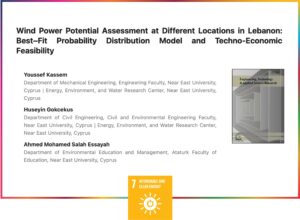
Researchers from Near East University have conducted a study aimed at assessing Lebanon’s wind energy generation potential, with a focus on its applicability for household electricity supply and sustainable technological development. The investigation involves an in-depth examination of wind speed characteristics across 12 locations in Lebanon, employing 44 distribution function models to determine the most accurate representation of actual data. The Wakeby and Beta distribution functions emerged as the most fitting models, showcasing the study’s innovative approach to wind speed distribution analysis in the region.
Moving beyond wind speed assessment, the research delves into the techno-economic and environmental feasibility of implementing 10MW grid-connected wind farms. Utilizing RETScreen Experts software, the study explores variations in financial parameters to ascertain the viability of proposed wind farm installations. The outcomes underscore the technical and financial feasibility of the envisioned wind farms, positioning Ain ed Dabaa as the most suitable location for future wind farm projects.
This research is particularly significant for Lebanon as it not only addresses the persistent issue of electricity shortages but also holds the potential to reduce dependency on costly electricity imports. By emphasizing the harnessing of wind energy, the study offers a pragmatic and sustainable solution to the nation’s energy challenges. The findings provide valuable insights into economic feasibility, enabling informed decision-making for the implementation of wind energy projects across diverse locations.
The research contributes to Lebanon’s aspirations for technological advancement and energy independence, aligning with the nation’s commitment to sustainable practices. By avoiding exaggerated language and focusing on practical implications, this study serves as a foundational resource for stakeholders involved in shaping Lebanon’s energy landscape.
More Information:
https://www.etasr.com/index.php/ETASR/article/view/5686